Toyota Yaris vs Hyundai Verna vs Volkswagen Vento + Maruti Suzuki Dzire: Comparison
Ever wondered which automatic transmission works the best? We took the plunge and lined up the Toyota Yaris, Maruti Suzuki Dzire, Hyundai Verna, and Volkswagen Vento for a comparison. Here's how it went.

AMT, DSG, CVT or AT – which should you choose? We dissect this alphabet soup and make sense of it all to help you choose the transmission that’s best for you.
They say a picture is worth a thousand words. Well, explaining this one is certainly going to take quite a bit more. A compact sedan, a driver-oriented mid-sized sedan, a rear-seat-biased machine, and a car from 2011, all make for a bit of an ill-suited bunch. Well, they all share something in common – the lack of a clutch pedal. But, and this is key, each of them has a distinctly different transmission. So, which one is best?
Representing the tried and tested CVT transmission is the Toyota Yaris – the newest machine here. The Verna, the next entry on our list, has a traditional six-speed torque converter (AT) gearbox, which is the most widely used automatic transmission in the world today. Next on the list is Maruti Suzuki’s Dzire, which has an automated manual transmission (AMT) – something that’s allowed Maruti to make automatic cars accessible to the masses. And the last on the list is also the oldest of the lot – the Vento. But mind you, old doesn’t mean outdated – for, with its slick shifting dual clutch (DSG) gearbox, the Vento continues to be a refined and capable automatic car.
Good ol’ AT to begin with
Let’s begin with the most popular system first – the torque converter. You see, unlike continuously variable transmissions, torque converters are capable of transmitting considerably higher levels of twisting force (torque) to the wheels. This makes them well suited for large capacity engines that power anything from premium to luxury cars, and even high-performance cars. And since they’re versatile, even mass-market carmakers use them.
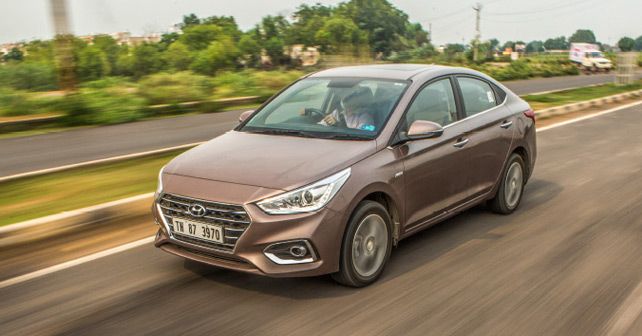
Let’s consider the Hyundai Verna first. It’s offered with either a petrol or a diesel engine. And while the 1.6 petrol model churns out 151Nm of torque, the diesel 1.6 generates 260Nm. Well, even though CVTs are constantly evolving for better performance, they’re not quite as adept at handling high levels of torque as compared with traditional torque convertor automatics.
Another advantage of torque converter transmissions is that they have minimal transmission noise, whereas CVTs are wheezy by nature and have fairly high NVH levels as compared to other types of transmissions.
To understand how a Torque Converter gearbox works you can read - Torque Converter Transmission explained
This makes the Verna rather nice to drive, for NVH is well contained in the petrol model. In the low to mid range, the car is fairly smooth. It’s only when you dig your foot deeper into the carpet that the transmission noise becomes discernible and grows quite loud in the higher reaches of the rev range. But, for normal city driving, the Verna is quiet, refined and makes driving in traffic a breeze. This, along with the leather upholstery, ventilated front seats and split screen infotainment system, makes the Verna feel quite premium from behind the wheel.
The Verna’s strong midrange is quite evident as you grow aggressive on the throttle. Continue a bit more and you realize that the car handles rather well. But, when you really start to push on, the limitations of the torque converter become evident. Apart from higher NVH, you can also feel power losses, as the transmission doesn’t allow the motor to rev as freely as a Verna fitted with a manual transmission – not to mention jerky upshifts when you’re hard on the throttle
That said, acceleration in kickdown mode is appreciable at low speeds – the car takes 3.11 seconds to sprint from 20 to 50km/h. However, when the transmission is in a higher gear, kickdown response wasn’t impressive – it took 6.35 seconds to go from 60 to 100km/h for instance. So, if you want to overtake quickly, it’s best that you downshift manually via the tiptronic function for better response.
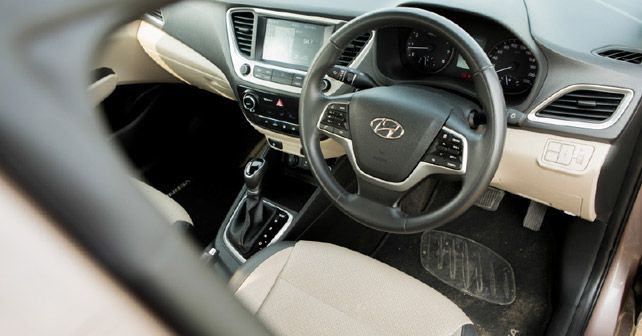
It’s also worth mentioning that, during the 0-100 sprint, the jerky upshits are more apparent, with the car losing considerable time. Still, the Verna has a respectable 11.95-second time for the 0-100km/h run for an automatic.
And, to give credit where its due, Hyundai’s 121bhp 1.6-litre petrol engine continues to be a very strong performer in its segment, with its willing nature and wide powerband. As for the automatic, it’s safe to say that it performs well as a daily driver.
Rubberband effect
It’s a widely known fact that a continuously variable transmission, or CVT, isn’t the most driver-focussed transmission out there. That said, since the transmission lacks gears, acceleration is seamless. As a result, the Yaris certainly feels smoother to drive than the Verna – at city speeds at least. Nevertheless, the Yaris does have that ever present transmission noise.
Of course, it’s lower when you’re light on the throttle, but as you approach the mid-range the noise becomes fairly evident and increases continuously with the speed. Being more aggressive on the throttle also causes the rubber band effect that’s commonly associated with CVTs.
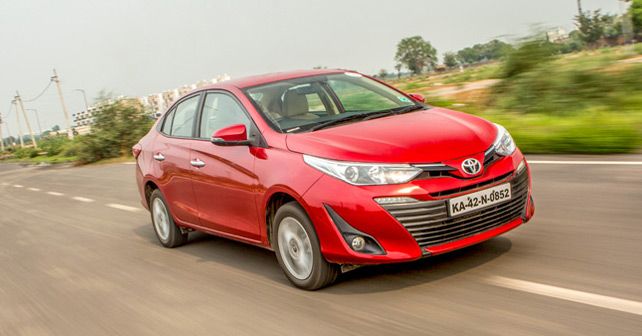
Like many CVTs today, the Yaris’ too comes with several stepped ratios. These ratios are essentially pre-determined artificial gear ratios. Essentially, these are pre-set points where the two pulleys of the transmission attain certain relative sizes, just like normal gears. So, when the engine runs out of revs, it’s possible to change gears manually by selecting the next set of relative pulley sizes for a higher output speed. Fixing the relative sizes of the pulleys, thus, makes CVT systems feel like it has traditional gears.
To understand how a Continuously Variable Transmission works you can read - Continuously Variable Transmission explained
It’s possible to change gears manually in the Yaris using the gear lever in manual mode or via paddle shifters located behind the steering wheel. But, while the stepped ratios sound intriguing, realistically, acceleration in the Yaris is always controlled by the transmission for better efficiency. So, even though the car accelerates quickly in manual mode, you constantly feel that the transmission is holding the engine back from reaching its true potential.
It’s crucial to note that, like all CVTs, the Yaris too has very high noise levels in the upper reaches of the rev range. And since it can get fairly loud, you can use the paddle shifters to upshift through the ratios to lower the revs – and, simultaneously, the noise.
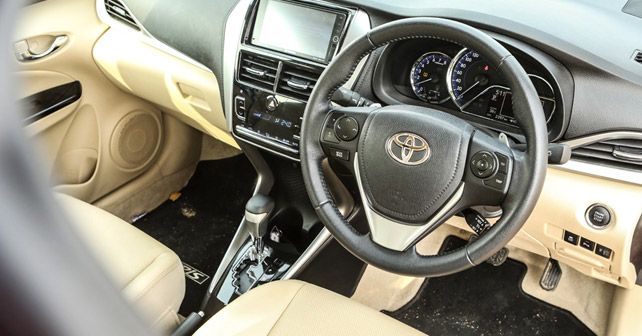
The limitations of the CVT system makes the Yaris the slowest car here from a standstill to 70km/h, despite being more powerful than the Maruti Suzuki Dzire. In fact, the car’s kickdown acceleration time (from 20 to 50km/h) was also the slowest.
Clearly, the Yaris isn’t meant to be a car for sheer driving pleasure. However, it’s a very smooth and comfortable car to drive in the city. But its real appeal lies in the rear seat – with a comfortable bench, plenty of legroom and roof mounted AC vents, the Yaris knows how to take care of its rear seat occupants.
What about a fun-to-drive automatic?
Well, if you want an automatic car that’s also fun to drive, look no further than the Volkswagen Vento. Ever since the Vento and Polo TSI were introduced they have remained unrivalled with their best-in-class 7-Speed DSG autobox. And, years later, VW continues to hold onto this USP. It’s interesting to note that the Vento automatic is `1.53 lakh cheaper than the Yaris automatic – a fact that adds to the advantages of the Vento. Compared to the Verna however, the Vento’s price tag is only `12,000 less. But of course, there are Volkswagen running costs to think of!
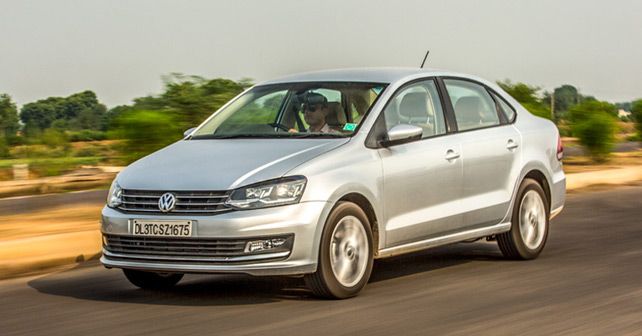
Once you start up the Vento, its leather clad, metal finished gear lever and that quality leather wrapped steering wheel make you realize instantly that this is not your average mid-sized car. Slot the gear lever into D to set off, and you feel the smoothness of the Vento TSI’s transmission. In fact, I must say that the smoothness of this twin clutch gearbox trumps even that of the torque converter. The shifts are well timed, and the ratios are perfectly set up. And with one clutch busy with the driving gear and the other ready to be engaged, the DSG feels like the most intuitive and smooth gearbox of the lot. Driving around town is truly a refined experience, as the transmission never bothers you at low to moderate speeds.
However, with an increase in speed, some delay becomes noticeable. But that’s nothing to worry about, as the DSG system comes with a ‘Sport’ mode. In this mode, downshifts are considerably faster, and the transmission holds gears for longer, which means that you’ve got access to immediate power at all times. In fact, the DSG’s ‘Sport’ mode is so good that you don’t really feel the need to use the manual tiptronic mode to change gears via the gear lever (no paddle shifters here). For an automatic, this DSG gearbox is as good as it gets in terms of refinement and performance. And in ‘Sport’ mode, the Vento TSI is a real fun car to drive that sounds good too.
To understand how a Double Clutch Automatic gearbox works you can read - Double Clutch Automatic Transmission explained
It’s worth noting though that, like the torque converter, the DSG too loses out on shift times when it comes to pedal to the metal acceleration – and, at the very limit, upshifts can become jerky too. Still, the drop in power is less than that of the torque converter’s. As a result, the Vento is the fastest car on this list, and by quite a margin. It’s the quickest, at 11.2 seconds for the sprint from 0 to 100km/h and also in kickdown times – taking just 2.45 seconds from 20 to 50km/h and 5.71 seconds from 60 to 100km/h. The more powerful Verna and Yaris simply don’t stand a chance.
But, as a mid-sized sedan, the Vento starts to fall behind because of its dated infotainment system and rather dull interior. And you don’t get anything fancy, such as ventilated seats, a sunroof or a gesture operated tailgate.
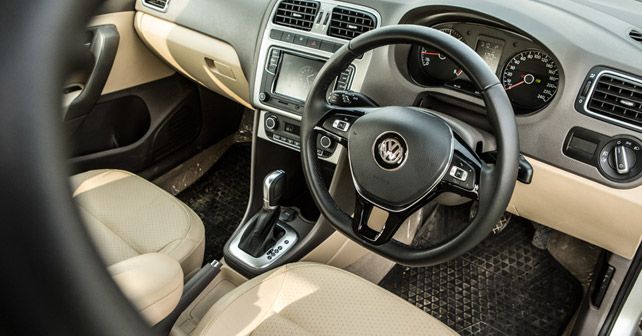
However, don’t for a moment think that the Vento is a thing of the past, for the Germans, as always, have really nailed the basics. The seats are very well contoured and are the most supportive. The cushioning is just perfect, the seating position is spot on and there’s plenty of rear seat space, with best-in-class leather upholstery and build quality.
All things considered, the DSG system seems to have taken the lead. The real problem, however, is the fact that all these automatic cars bear a premium of well over a lakh over their manual counterparts – and this certainly doesn’t sit well with price sensitive Indian buyers.
AMT to the rescue
In comes the Dzire ZXi+ AMT, which costs just `47,000 more than the ZXi+ manual. Now, consider this in terms of EMIs, and the entry barrier into the world of automatic cars simply disappears. So, the question is – how did Maruti Suzuki manage this miracle? Well, the AMT transmission system developed by Magneti Marelli is essentially the same five-speed gearbox that the manual Dzire uses. The AMT system incorporates a hydraulic actuator and a Transmission Control Unit to carry out gear changes automatically. The AMT is not just simple but also frugal. AMT cars have the same fuel efficiency figures as their manual counterparts, for they have essentially the same gearbox – all the linkages are there and there’re no in-gear transmission losses like those of torque converters and CVTs.
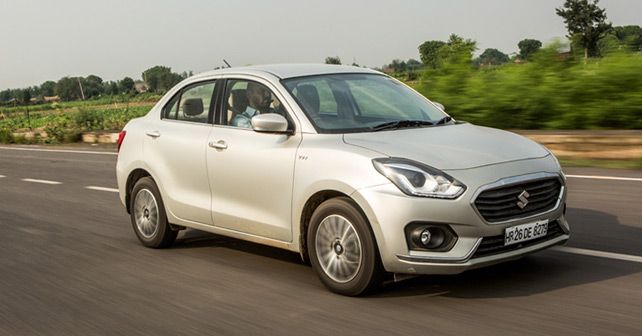
As a result, the Dzire AMT returns identical fuel efficiency as the manual Dzire. So, what’s the catch? Well, the AMT gearbox has been overly and constantly criticized for jerky upshifts, which is true for the most part. For those who are new to an AMT, this issue is particularly evident. But to overcome its jerky nature, all you have to do is ease the pressure on the accelerator pedal slightly when you want a gear change, and the transmission will give you a smooth and seamless gearshift. Once you get used to it, trust me, it’s really not that hard.
So, with this small adjustment you get to enjoy the benefits of an AMT gearbox – there’s no sapping of power here, so you get all the pulling power of the manual model. I must add that Suzuki’s K Series engines really like to rev, and they sound quite sporty too actually. So, acceleration in the Dzire is fairly brisk – something that reflects in its timings too. With the force of its diminutive 81bhp petrol engine, the Dzire managed to be faster than the 103bhp Vento and 121bhp Verna in the sprint from 0 to 40km/h, and it bettered the Yaris all the way to 70km/h! So, despite being considerably less powerful than the bigger cars on the list, the Dzire’s AMT allows it to accelerate impressively. But, then again, the Dzire is also a little under 200kgs lighter than mid-sized cars here.
It’s only under aggressive acceleration that the AMT’s jerky upshifts are impossible to do away with. It managed the 0-100km/h sprint in 13.04 seconds. But our test car desperately needed a service – so I assume that the Dzire petrol has more to give. On the whole, the Dzire impresses – not only with its transmission, but also as a complete product. Of course, you can’t compare this transmission for refinement with the DSG, and you can’t compare it for features with the Verna or comfort with the Yaris, but if it’s simply the lack of a clutch pedal you’re after, the Dzire is the easiest way to get there.
To understand how an Automated Manual Transmission works you can read - Automated Manual Transmission explained
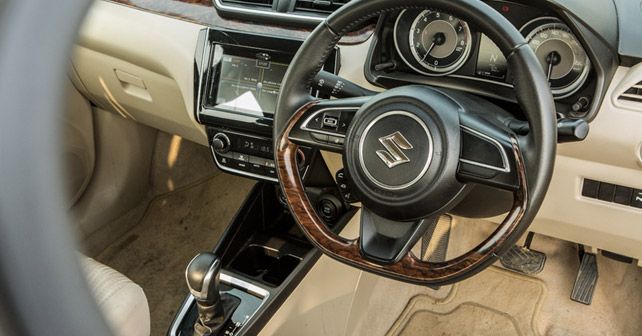
At the end of the day, it’s clear that in this test the DSG is the most sophisticated and responsive transmission here. Having said that, manufacturers are moving away from double-clutch gearboxes – due to their weight and complexity – and gravitating towards using single clutch torque convertor automatics, as they’re becoming even more responsive and seamless. To that extent, the AT in the Verna certainly does the job – even if it isn’t the more responsive ‘box around. The CVT in the Yaris is actually very good for the city, but fails miserably once you start pushing it. The AMT of the Dzire, meanwhile, gives you affordable access to the world of automatics, but it is a compromise in that it requires you to alter the way you drive – albeit slightly – to ensure smooth shifts.
The mid-size dilemma – which one should I buy?
In the mid-sized segment, the Vento DSG, Verna AT and Yaris CVT aside, the other options are the Honda City CVT and the Ciaz automatic – which comes with a four-speed torque converter. But a facelifted Ciaz is just around the corner, so we’ll have to wait and see if that brings with it a change in drivetrain.
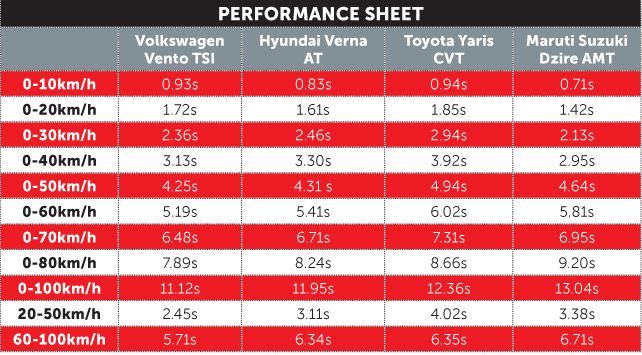
Amongst this list, there’s simply no denying that the Vento’s DSG is the most superior. But if it’s reliability and cost effective maintenance you’re after, you’ll have to choose between the Verna and Yaris – in which case it’s easy. The Verna is the one to have if you enjoy driving, while it’s the Yaris if you find yourself in the rear seat more often than not. On the off chance that you end up in the driver’s seat however, the Yaris is a breeze to pilot in the city – just go easy on the loud pedal.
Engine: 1,591cc / 4-Cylinders / 16 Valves / DOHC
Fuel: Petrol
Transmission: 6-Speed torque converter / Front-Wheel Drive
Power: 119bhp @ 6,400rpm
Torque: 151Nm @ 4,850rpm
0-100 km/h: 11.95s
20-50 km/h: 3.11s
60-100 km/h: 6.34s
Fuel efficiency: 17.4 km/l (claimed)
Price: Rs. 12.66 lakh (Ex-showroom)
X-factor: Very drivable and usable everyday.
| Pros • Smooth & drivable Refinement • Good NVH at average speeds |
Cons |



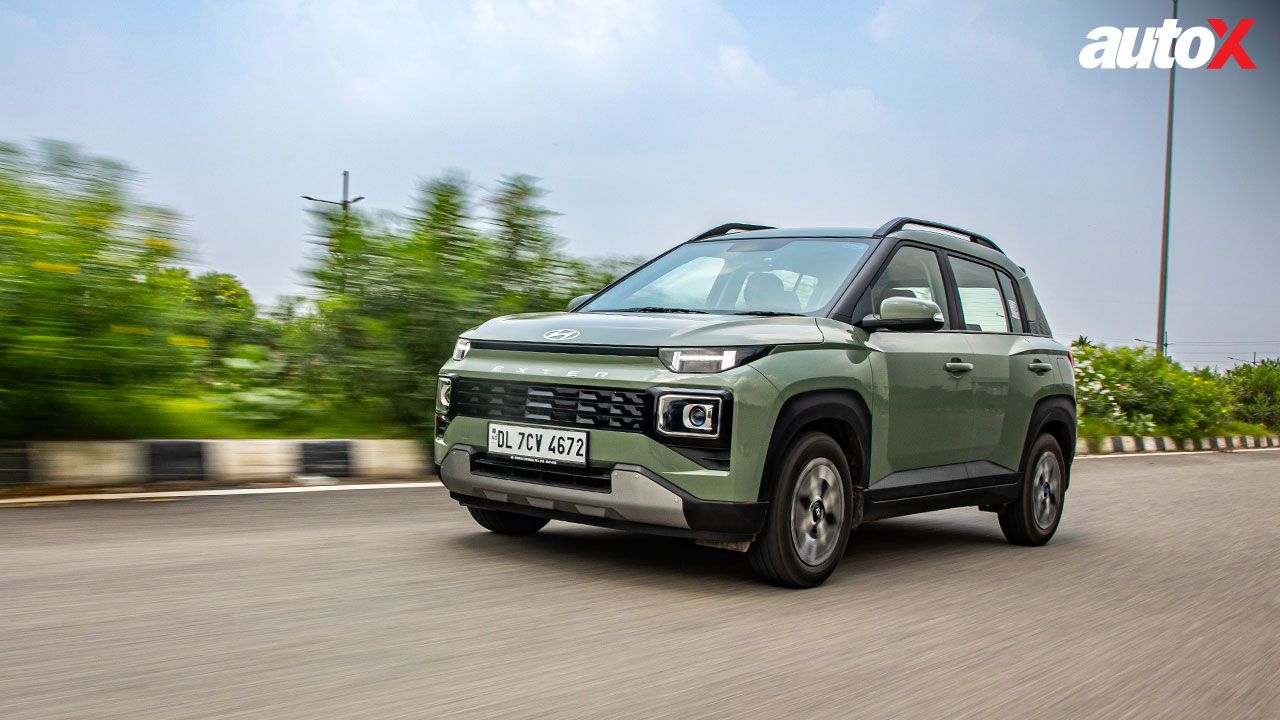


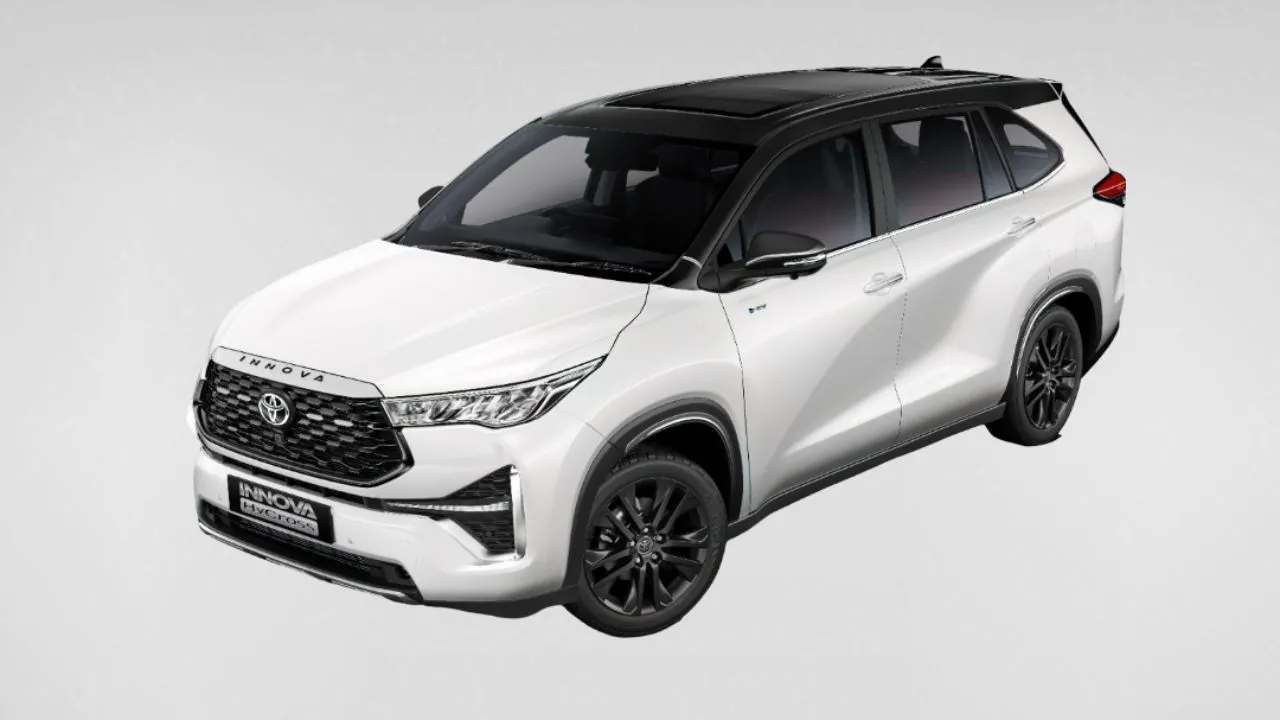

Write your Comment on